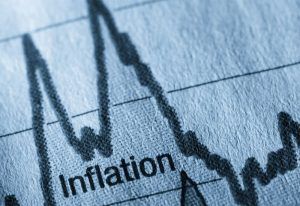What the Inflation Data Really Means for You
Posted onWhile official government inflation numbers have fallen from their peak, Americans still feel the economic pain from rising prices. The annual Consumer Price Index (CPI) inflation rate peaked at 9.1% in June 2022 and has come down in recent months, yet it’s still sharply higher than two years ago.
Inflation Impact: Americans Spend $709 More Each Month
The average American household spent $709 more in July 2023 than they did two years ago to buy the same goods and services, according to Moody’s Analytics.
That makes sense. While the July CPI hit 3.2% following the 3% increase in June—that is a cumulative number. That means the 3% June 2023 increase is on top of the 9.1% increase in June 2022. That’s a hefty number over two years ago.
Just because official government inflation numbers have fallen doesn’t mean your monthly expenses are down. Actually, it’s the opposite.
Digging deeper inside the latest CPI, the price increases are still staggering on a year-over-year basis:
- Food away from home (think restaurants) increased 7.1%
- Shelter prices (housing) were up 7.7%
- Transportation services (like airfares) were up 9%.
Will prices ever retreat to their pre-pandemic levels? It’s unlikely, experts say.
Gasoline prices are heading higher again, with regular gasoline prices up 30 cents a gallon in mid-August from a month earlier, according to OPIS. As far as food goes, a number of factors are conspiring to keep the price trend higher there including rising food transportation costs, poor weather for the crops (heat and drought), and El Niño, a weather pattern that can worsen drought.
The Last Mile Problem
Fed watchers are now pointing to the so-called “last mile problem” as it relates to inflation. Sure, inflation has come down from 9.1% to 3.1%, but it still remains above the Fed’s 2% target inflation rate, and that represents the very challenging last mile in the inflation fight.
While the Federal Reserve has already hiked interest rates to their highest level in 20 years to battle inflation, it may not be enough. Consider this: “Academic studies and other research concluding the levels of inflation seen over the last two years can’t be fixed without a downturn, and prominent economists projecting a jump in the U.S. unemployment rate to between 5% and 10% from the current 3.5% – with millions out of work – might be the price that’s paid [to fix inflation],” according to an Aug. 14 Reuters article.
Another piece of the puzzle is the catastrophic level of U.S. national debt, which currently stands at an all-time record high at $32.66 trillion. There is concern that the U.S. government may continue to print more money to pay back its debt, which creates more inflation as bondholders are paid back with devalued money.
Gold Provides Wealth Protection
In the midst of stubborn inflation, high interest rates, and government money printing, gold continues to stand alone in its value for investors.
Gold is a tangible asset that can’t be devalued by government printing presses. Gold holds no counter-party risk and isn’t attached to any one nation or its debt levels. Gold has been a store of value for thousands of years and is a recognized currency in every country on the globe.
In light of today’s economic challenges, it’s no surprise that more investors are turning to the safety and protection that gold can provide. Let us know if we can help you review your unique personalized situation and make recommendations to help you meet your long-term financial goals. We are here to help.
Want to read more? Subscribe to the Blanchard Newsletter and get our tales from the vault, our favorite stories from around the world, and the latest tangible assets news delivered to your inbox weekly.







